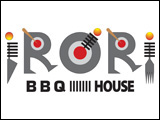What is a farmer’s relationship with environmental and animal welfare certification programs? Would it be right to say that it’s complicated? On one hand, farmers feel targeted by those in the activist community who reject the realities of modern agriculture. No genetically modified anything. No fertilizer. No pesticides. Small holdings with a few chickens, a couple of cows, and a pair of pigs. Farms drawn out of an idolized past of Ol’ MacDonald. Some farmers are concerned that certification programs might be helping to promote this agenda.
The reality is different. Agriculture can rightfully claim to be a leader in rapid advancement in environmental management. These improvements are made possible by the adoption of technology and innovation, not their rejection. Widespread adoption of minimum tillage is reducing greenhouse gas emissions and protecting our soils. Improved soil management is the reason Saskatchewan does not blow into Ontario anymore, like it did in the 1930s. In the hog sector, the adoption of technology, manure injection for example, is helping to ensure organic nutrients are placed where they are most accessible to crops, maximizing their value and minimizing potential environmental impacts. Research has shown that the hog sector’s environmental footprint has decreased significantly in the past 50 years. Hog farmers today produce more food with less environmental impact, a trend that is continuing because of investment of farmers’ money into research on innovative technologies and practices.
However, there is a divide between the view of agriculture held by some urban Canadians and daily farming practices. This is impacting how policymakers perceive agriculture and affecting the programs they implement. This gulf was exposed recently when the Government of Canada announced a target of a 30 percent reduction in emissions from nitrogen fertilizer. Farmers felt they were unnecessarily targeted by policy makers who have not taken the time to understand the industry. Many believe that consultations were, at best, inadequate or even non-existent. Farmers are asking why there have been few attempts to collaborate with producers to align policies with agriculture initiatives that are already underway. There is a lack of evidence that policymakers understand the effect this target will have on Canadian agricultural production or the impact on our economy.
Why does this gulf exist? Part of the reason is the practice of wedge politics that pits one set of voters against another. All parties have been guilty of this. However, the divide is not just caused by divisive politics. Farmers and their representatives should also carry some of the responsibility for the gap between urban and rural perceptions because of the way in which we communicate the impacts of modern agriculture.
Poll after poll tell us that farmers are some of the most trusted folks in Canadian society. While I believe this to be true, I am concerned that this perception is based on an image of the 1950s farm and that it may not apply to the realities of modern, high-tech agriculture. In other words, Canadians may like farmers, but because of a lack of understanding of modern practices, they may not like what farmers do every day.
How do we change the narrative? As a first step, we need to stop apologizing for everything that comes with modern agriculture. It makes me cringe to see inaccurate portrayals, like advertisements with the little red barn next to a small field with an old cabless tractor, and three pigs and a duck playing in the foreground. How about showing a modern, multimillion dollar hog production facility? Please, we need to forget the picture of the plow and show a 75-foot airseeder precision planting into a minimum-till field. We shouldn’t hide modern agriculture away from the public.
Second, we are talking to the “prove it” generation and need to demonstrate the accuracy of what we say. This needs to include science-based assurance programs that set standards for environmental stewardship and animal welfare. These standards need to be backed by regular audits and commitments to continuous improvements, based on the latest scientific research. The hog sector is transitioning to Canadian Pork Excellence (CPE), a set of programs that allow registered pork producers to demonstrate compliance with food safety and animal care requirements. Other livestock groups have similar programs that help demonstrate responsible production. Farmers’ participation in these programs needs to be embraced by the industry and better promoted as part of the story of Canadian agriculture.
Politicians take their cues from the voters who elect them to office, the vast majority of whom come from urban Canada. Changing the narrative with consumers and citizens will also change the narrative with policymakers. It may take time to shift the conversation, but highlighting the benefits of modern agriculture and demonstrating, not just talking about, the industry’s existing commitment to management practices that enhance the environment and improve animal welfare will help prevent naïve and shortsighted policy announcements and burdensome regulations.



